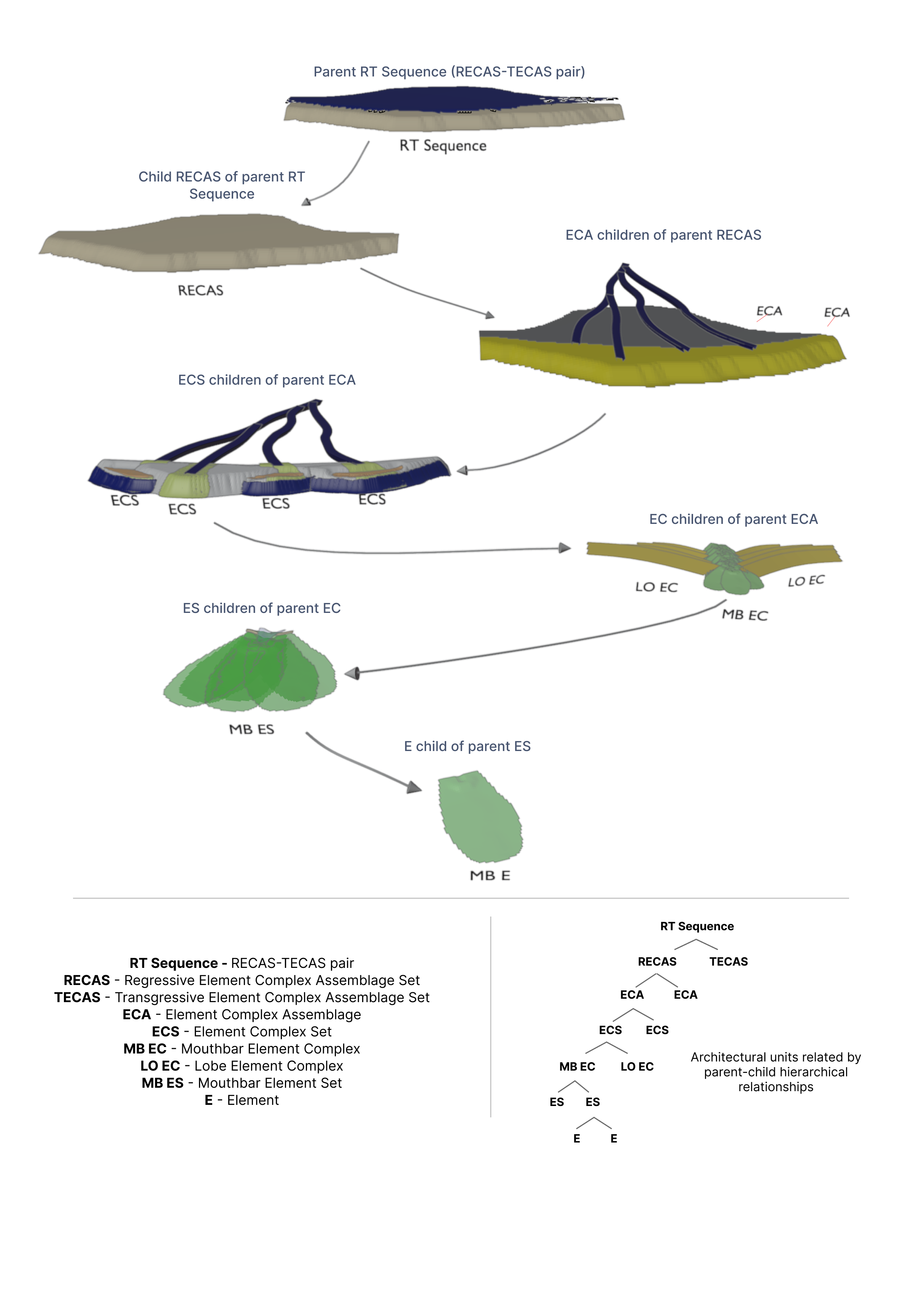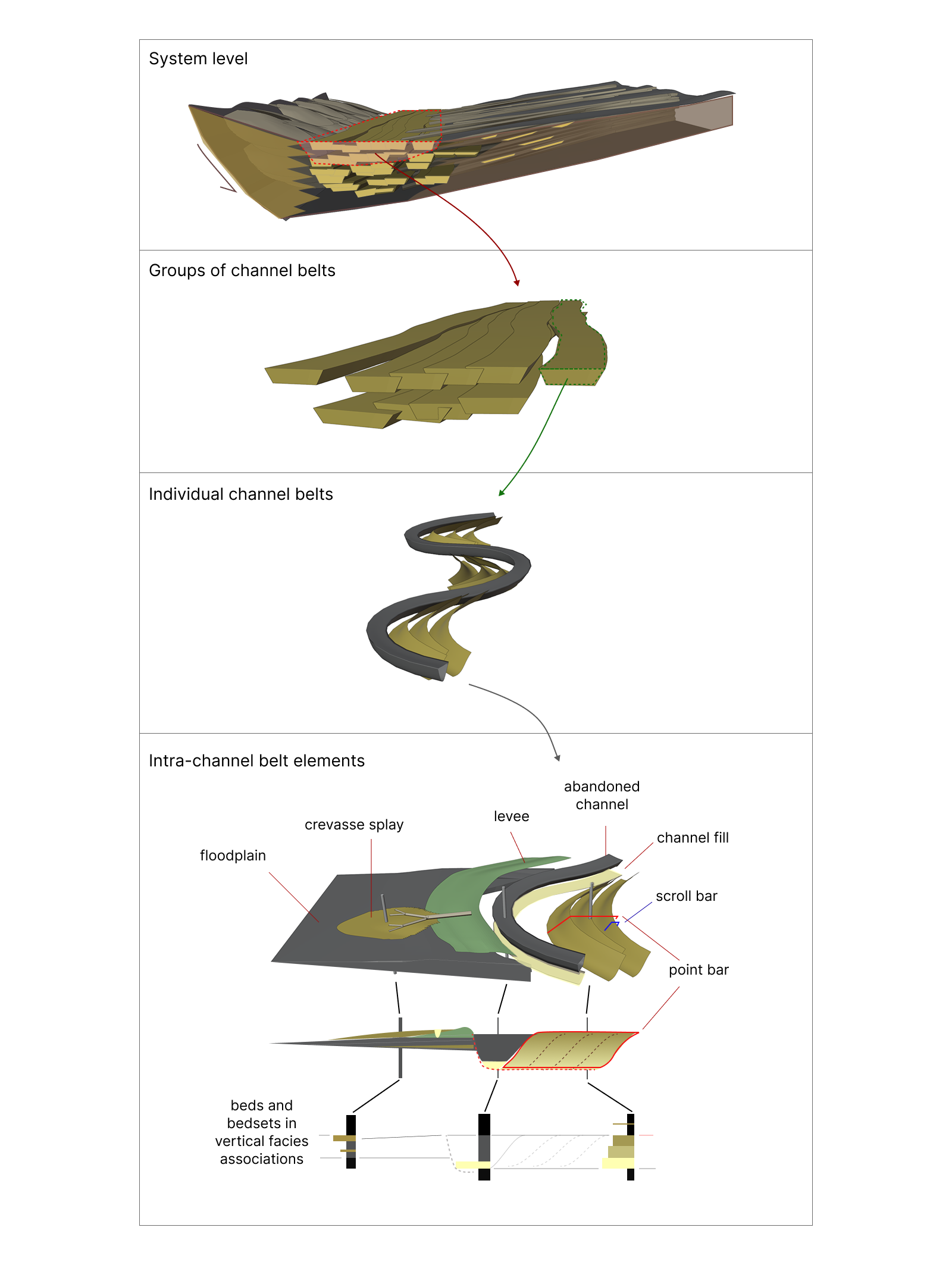Why use depositional hierarchies?
Sediment deposition occurs across a wide range of temporal and spatial scales, creating stratigraphic architectures at multiple depositional levels. These architectures strongly influence how fluids move through the subsurface.
Using depositional hierarchies allows you to focus on the depositional scale most relevant to specific question being addressed in the subsurface.
These are a few examples of how different levels of architecture can affect fluid flow in the same subsurface interval:
- Subsurface fluid flow may be significantly influenced by regionally extensive shoreline sediment bodies formed in response to sea-level changes, particularly where coarse-grained intervals are capped by laterally continuous shales.
- Predicting flow within a particular coarse-grained interval depends on understanding the type and architectural style of the depositional system that created it.
- Accurate flow prediction at the well scale often requires a detailed understanding of the local depositional environment.
Linking architectural units via parent-child relationships
The WAVE Process and Architectural Classification system enables the placement of architectural units across distinct hierarchical levels, linked through parent-child relationships.
This framework allows the description of depositional architecture from the scale of sequence stratigraphy (e.g., regionally extensive regressive and transgressive shoreline transects) down to the formation of heterogeneities within local depositional environments.

Hierarchical approach applied to an alluvial system.
